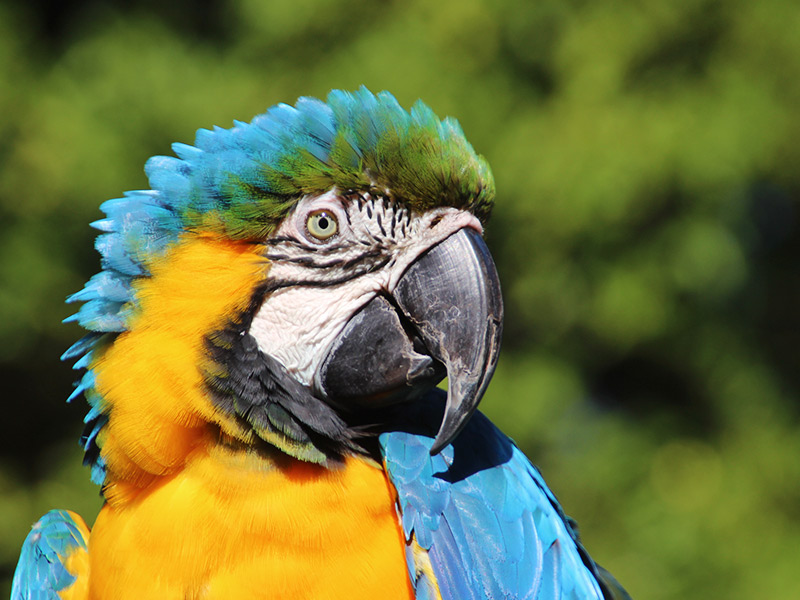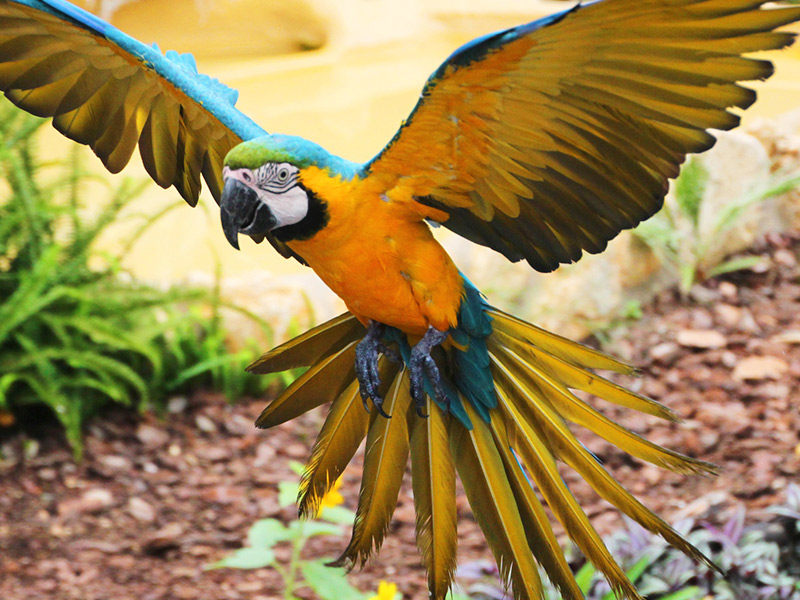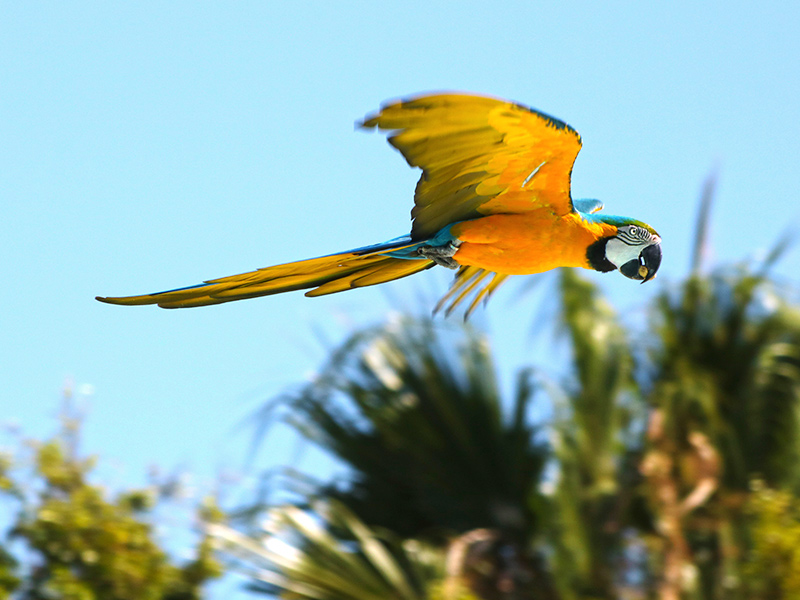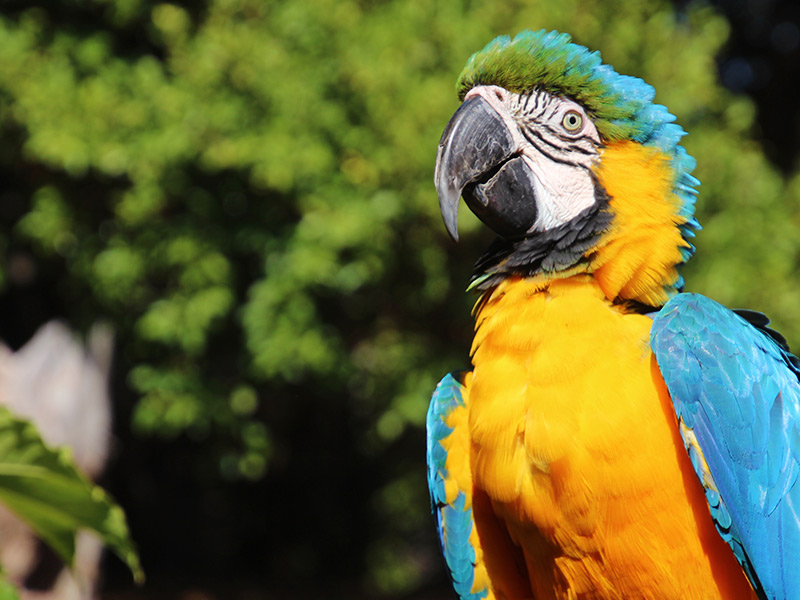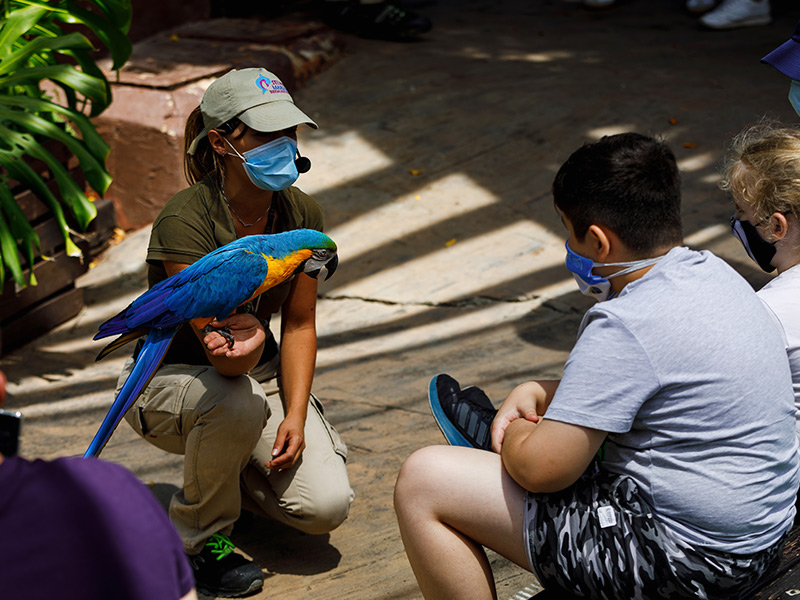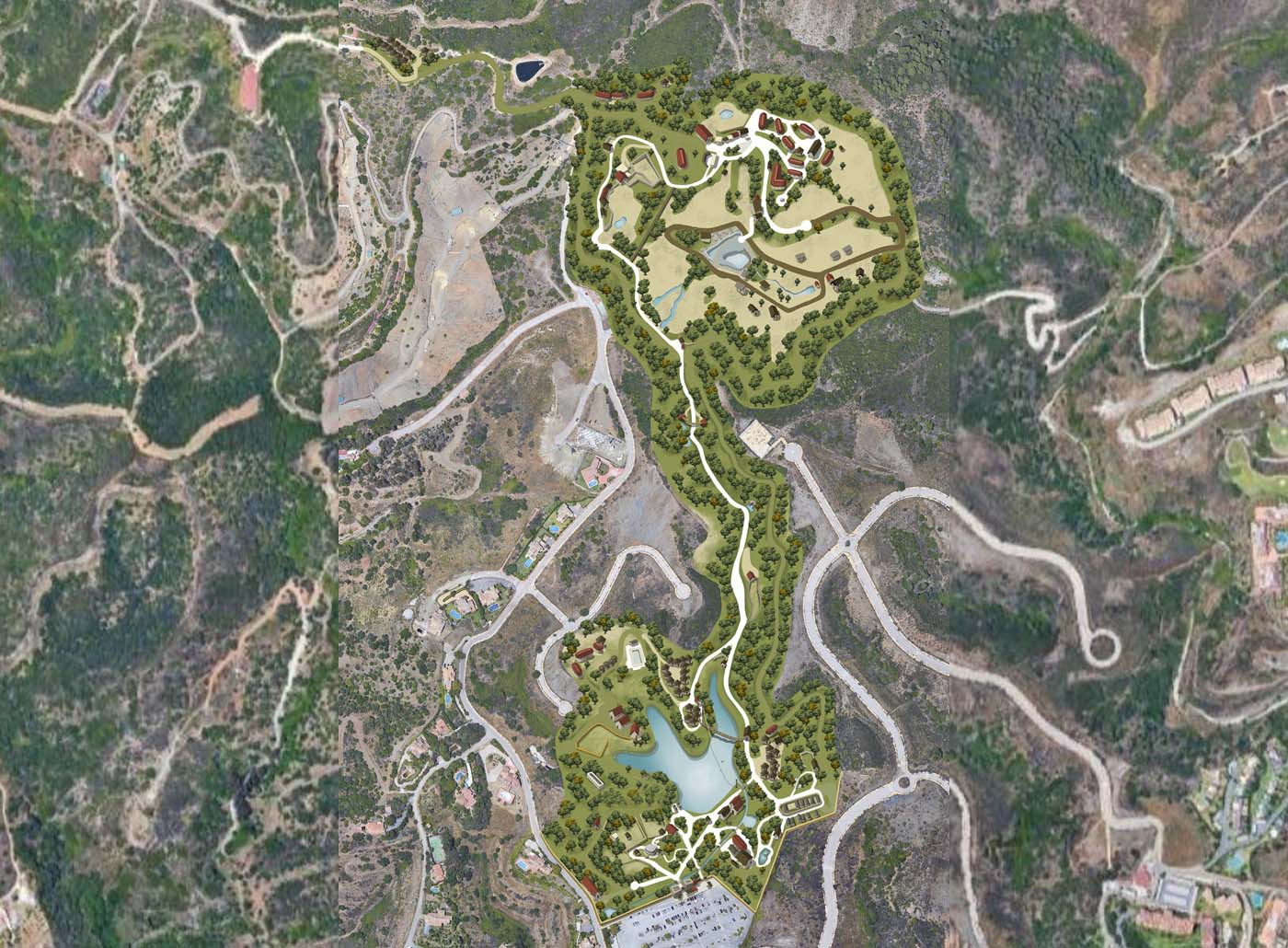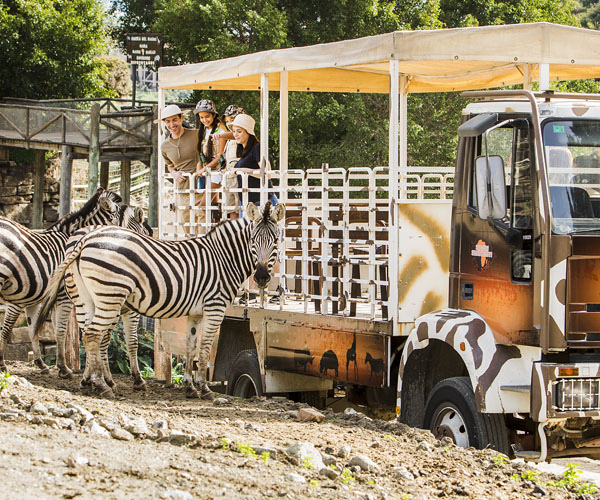It is distributed in the subtropical and tropical forests and savannas of South America, Central America and Mexico.
There is no sexual dimorphism; male and female look the same. They live mainly in monogamous pairs that mate for life, although they may congregate in groups to form flocks when searching for food. They nest in cavities made by other species in high areas of trees. Females lay 2 to 3 eggs and incubate them for 24 to 28 days. Once hatched, both males and females will care for and protect the chicks, although during the first week the female will be the only one to feed them by regurgitation. After this time, the male contributes again to their feeding and care.
Their diet is based mainly on seeds, fruits and nuts that they break with their strong beaks. They sometimes consume clay, which allows them to digest toxins from immature seeds they may have ingested. Their diet influences forest dynamics through seed dispersal.
Their main threats are habitat degradation, pollution and the illegal pet trade that have caused them to disappear from many areas of their range. It is included in appendix II of the CITES Convention, which regulates the trade of species, given that trade is its greatest threat. In some years more than 50,000 wild individuals have been captured to be sold as pets.
